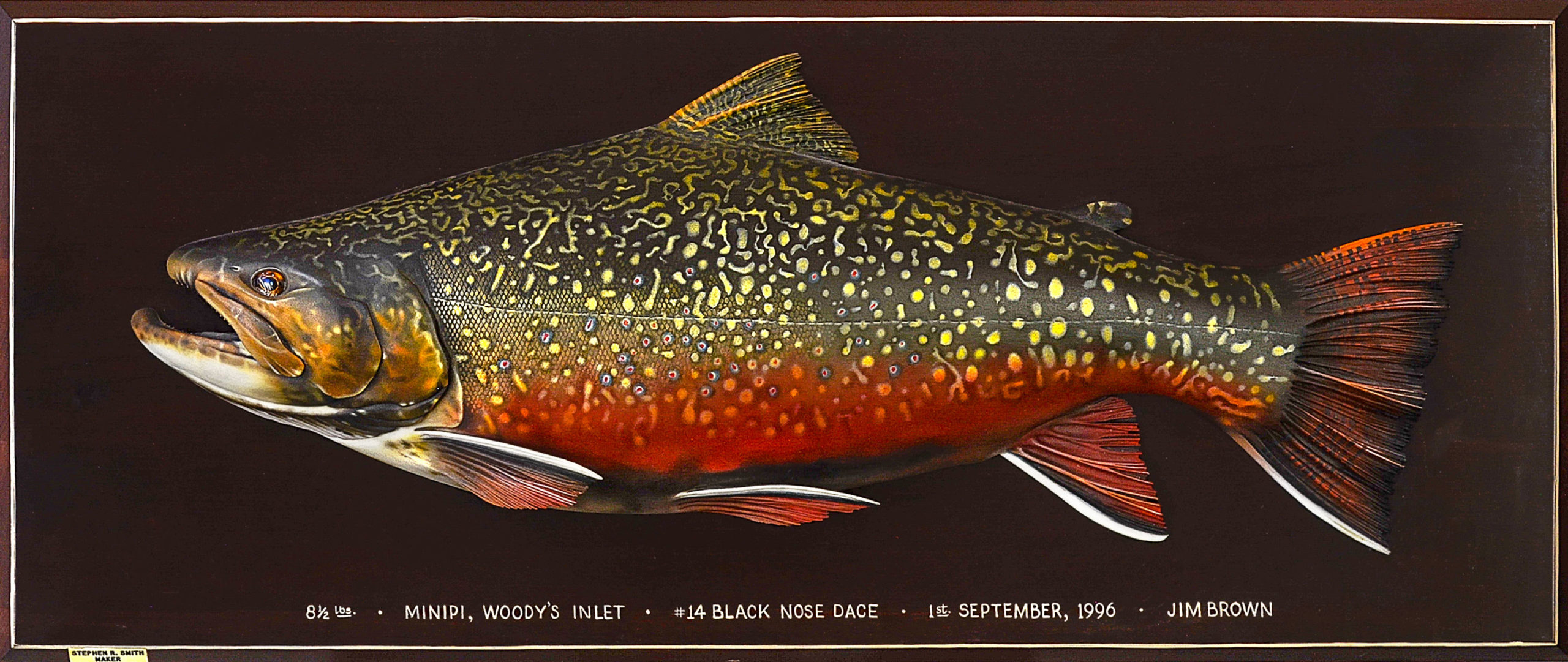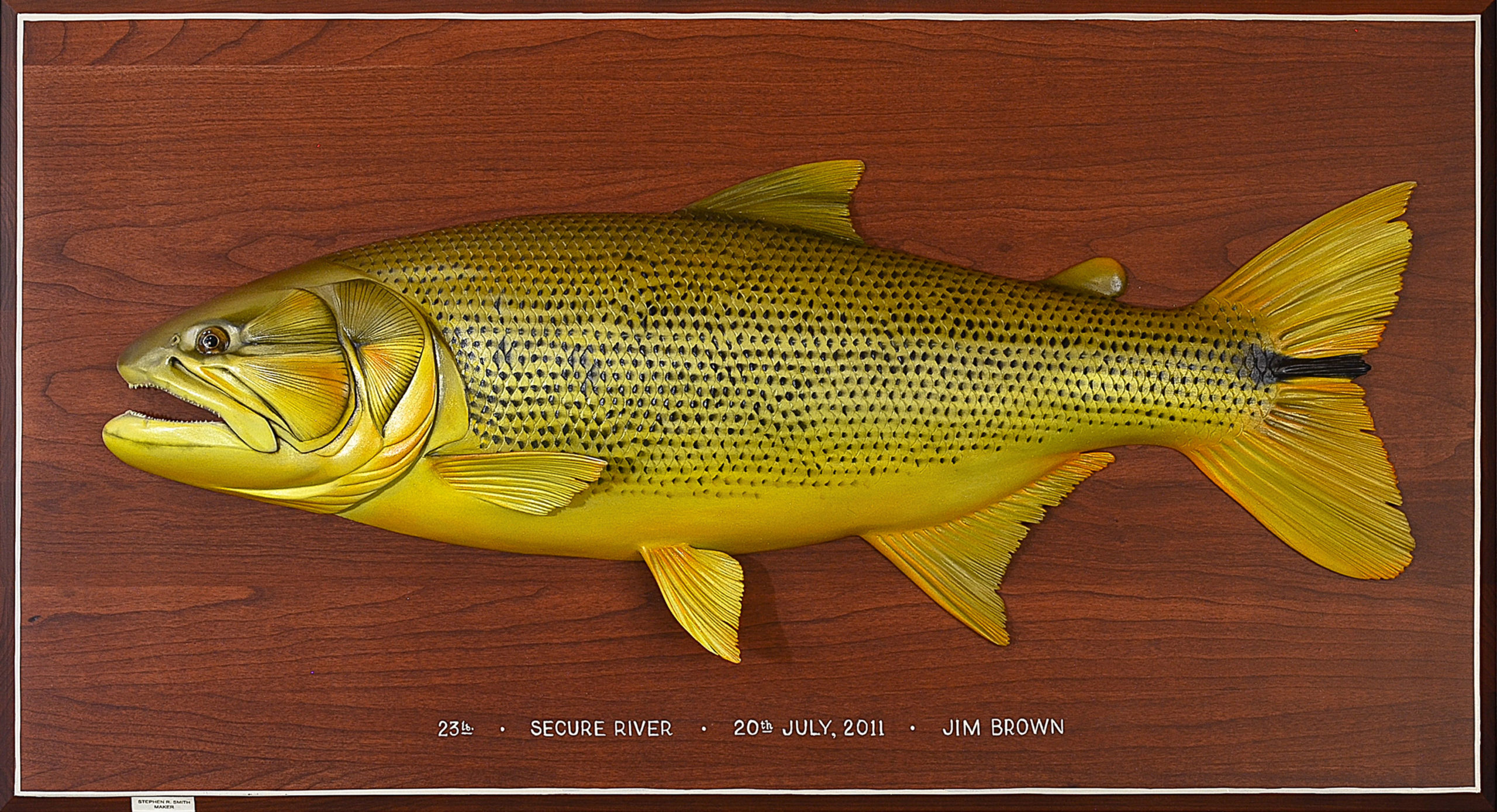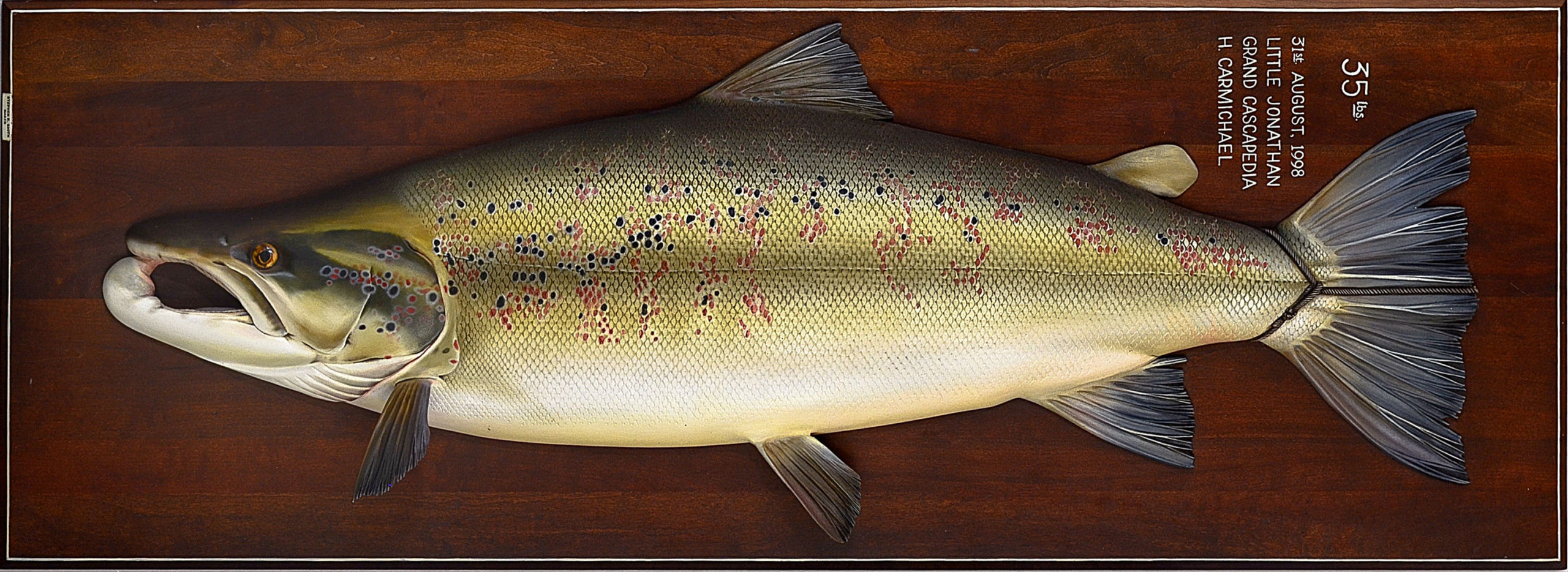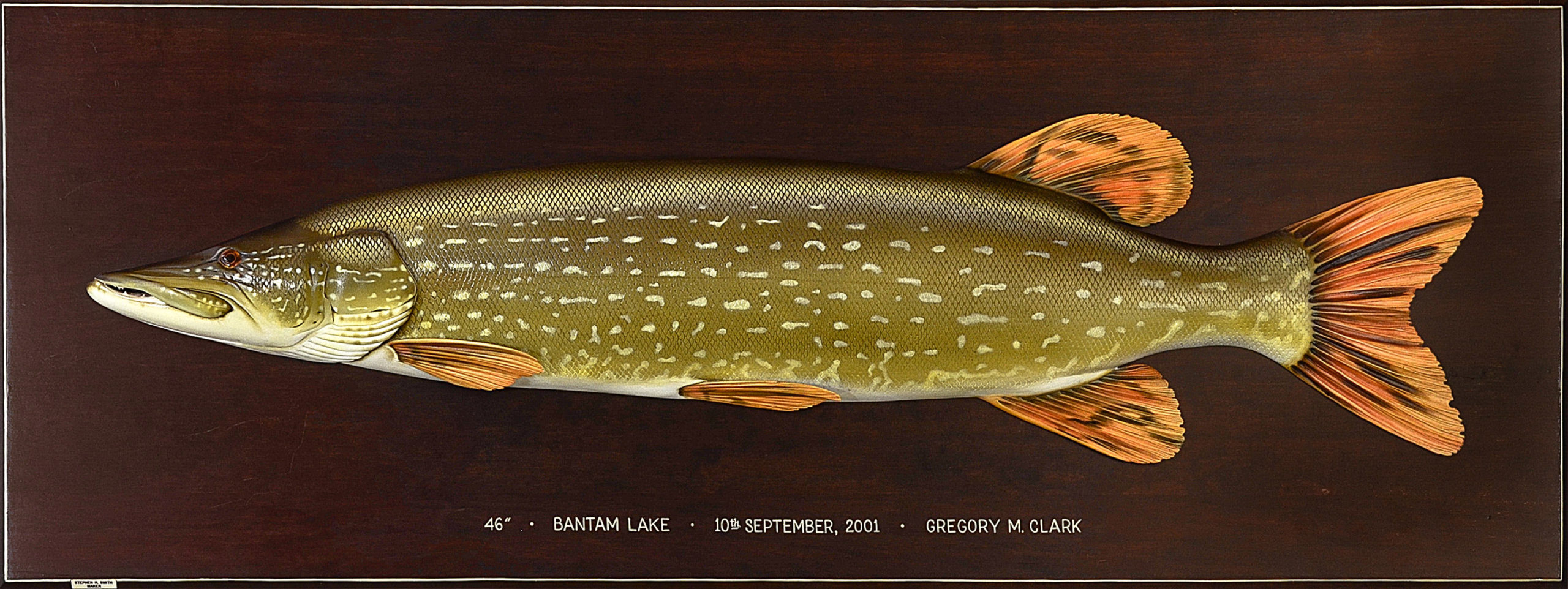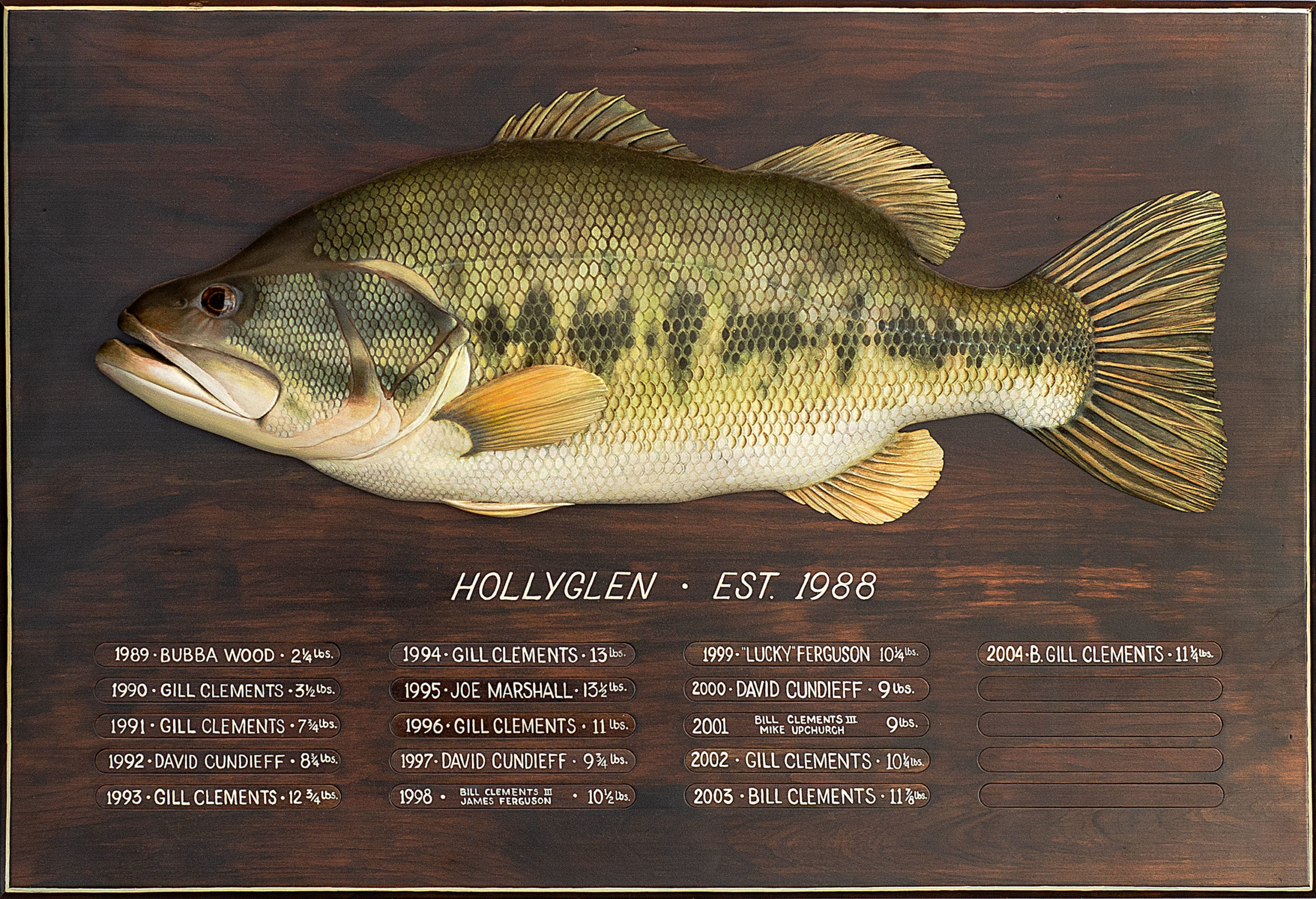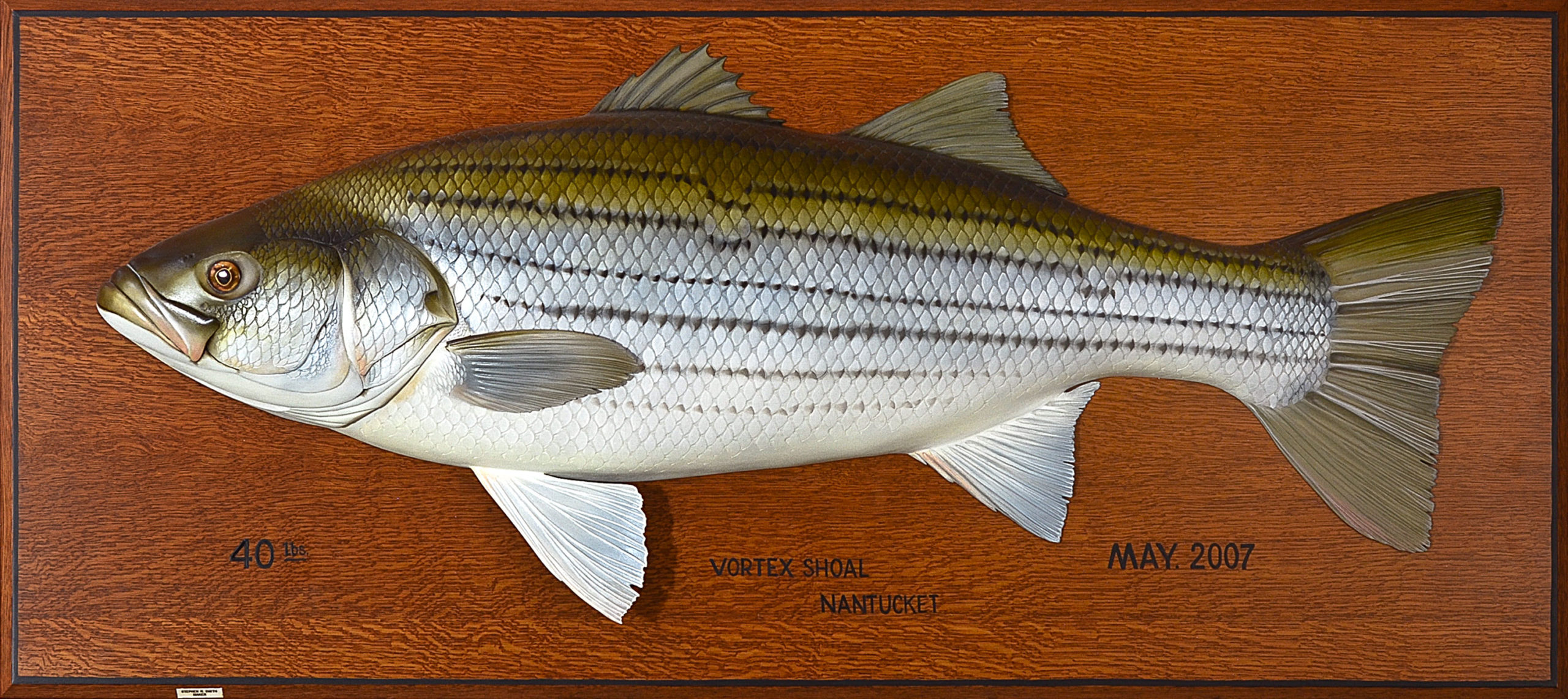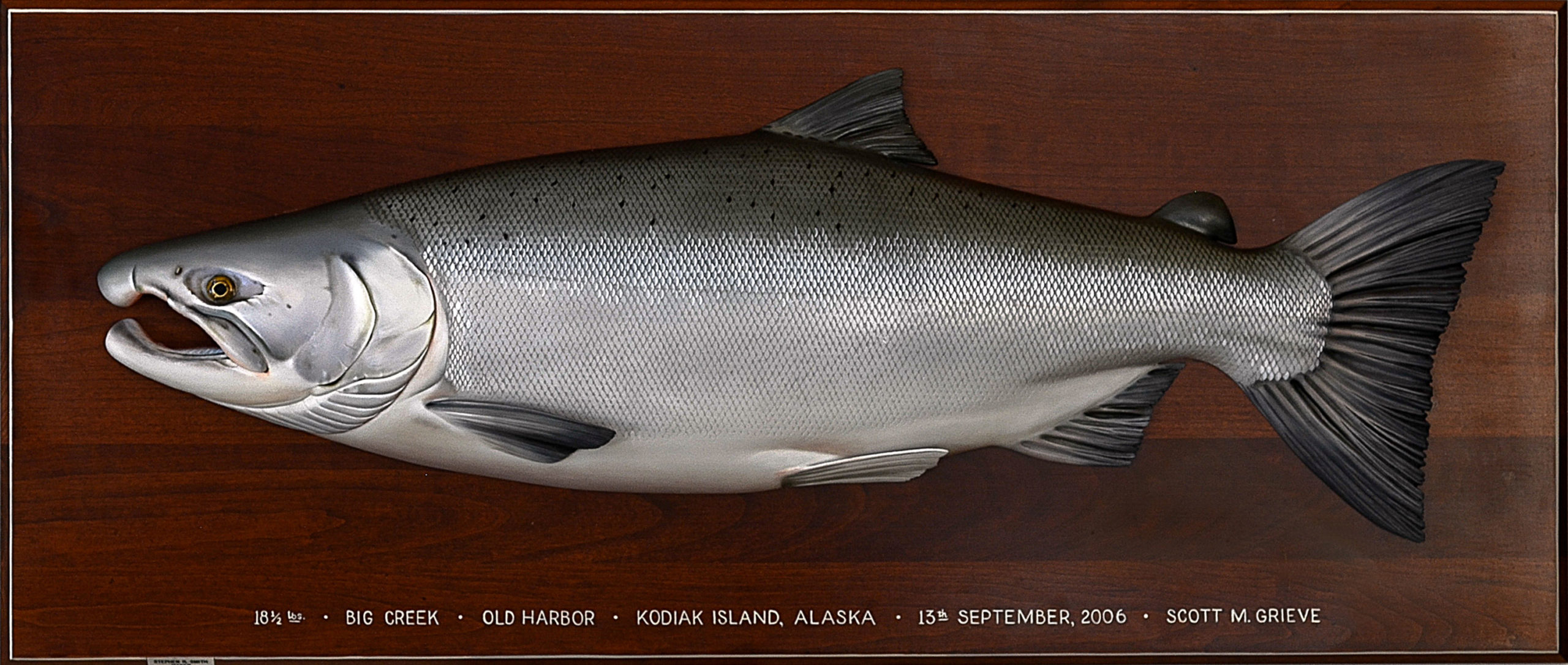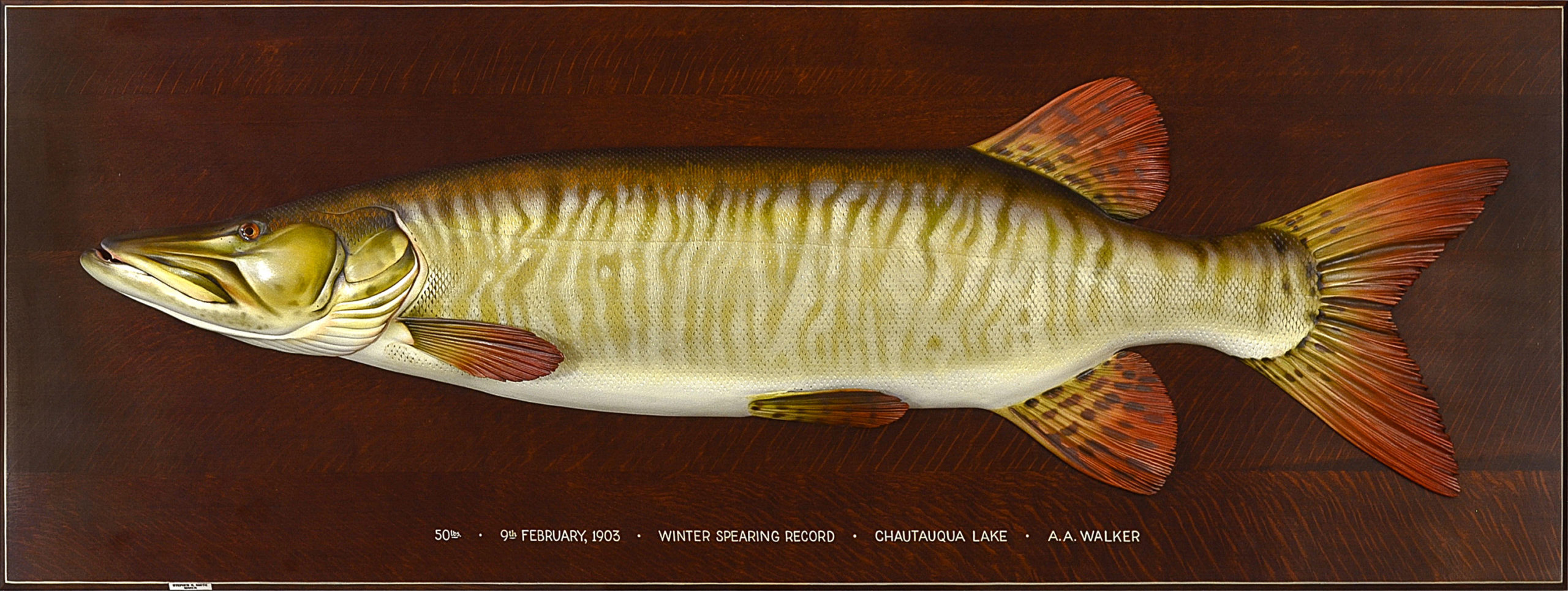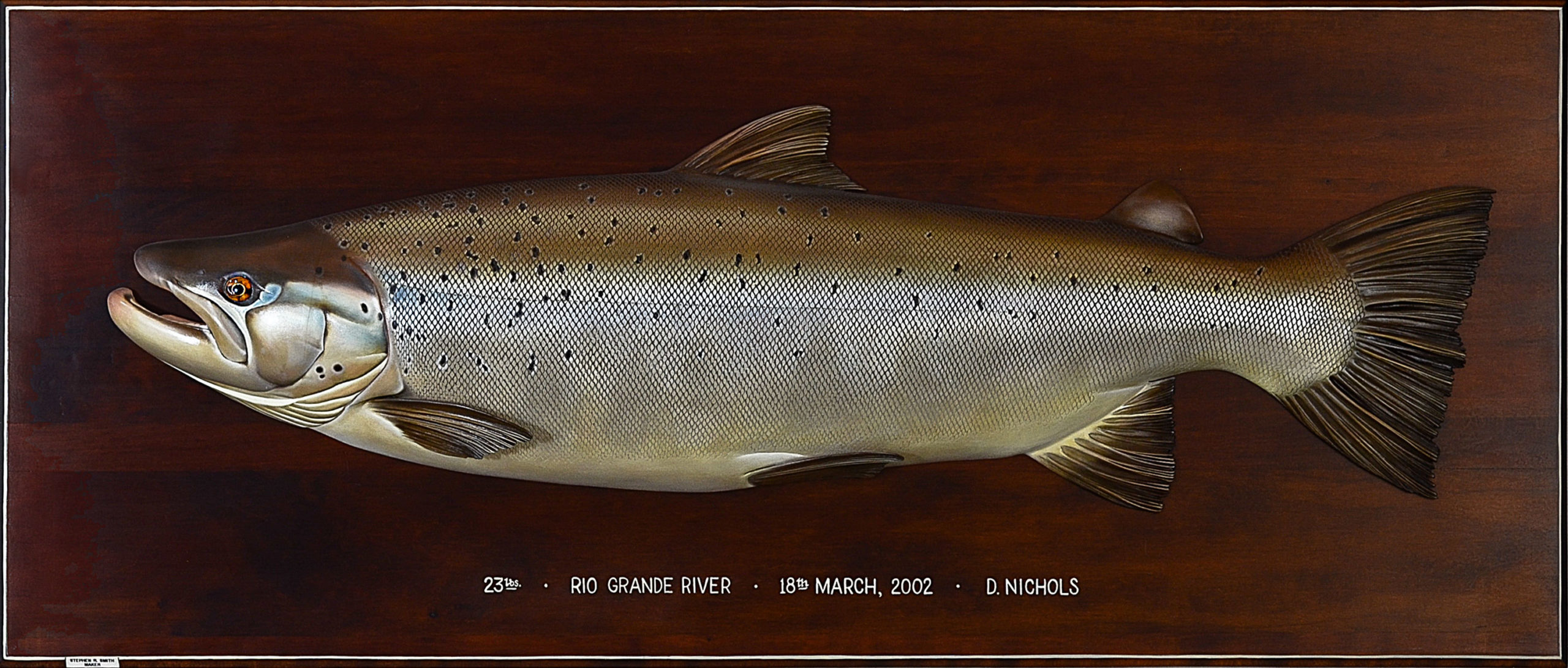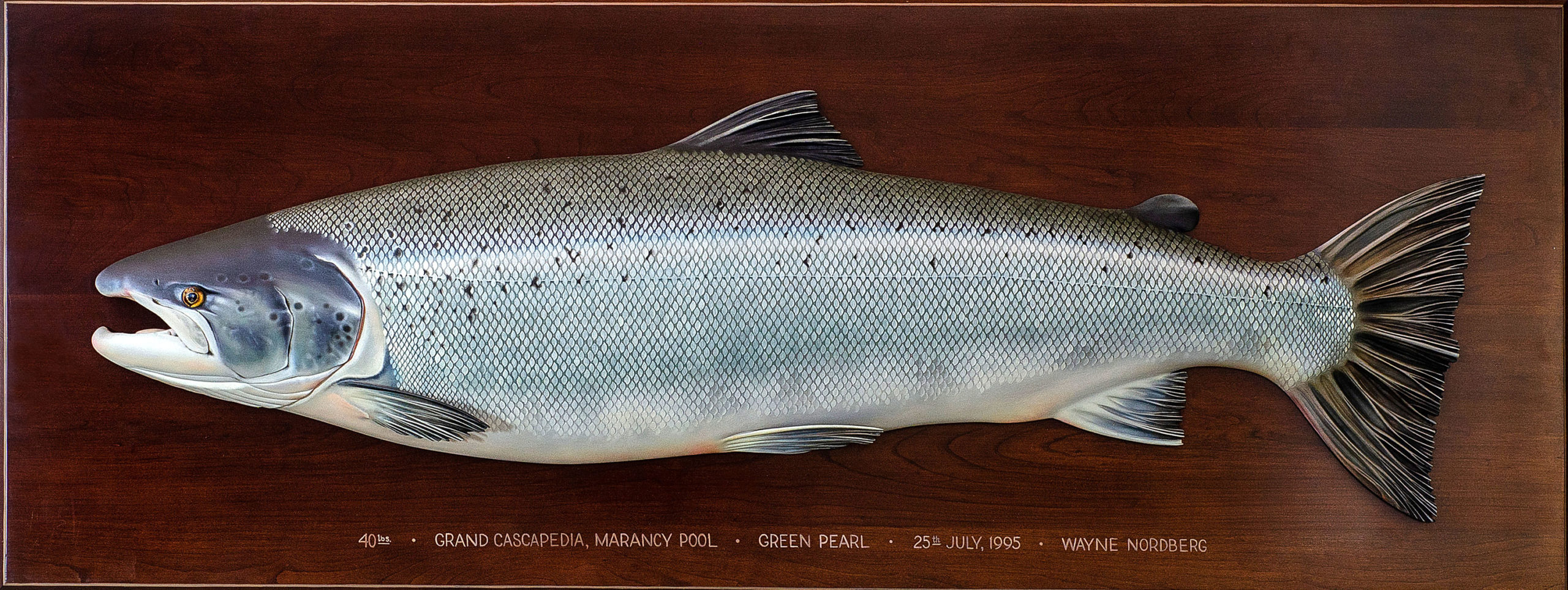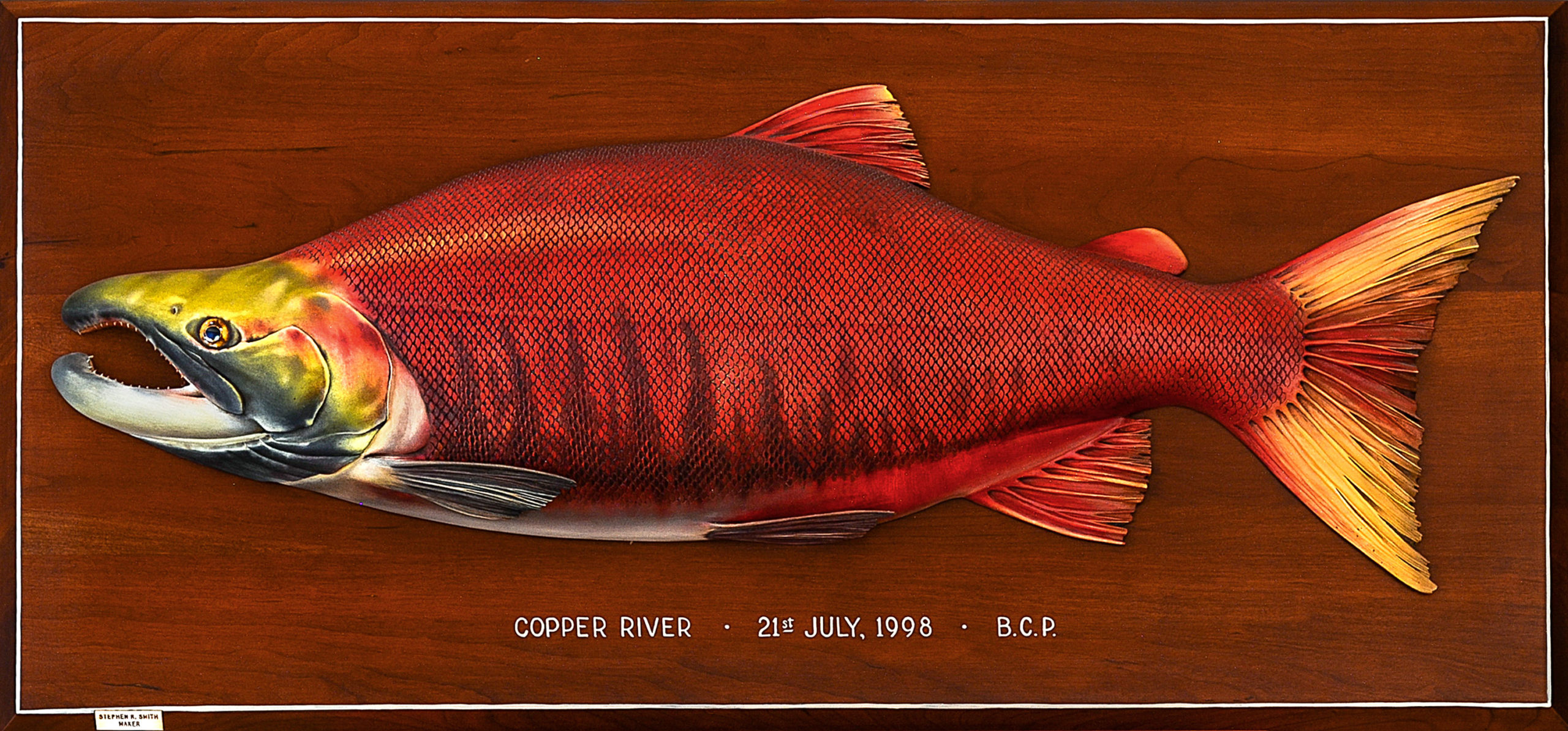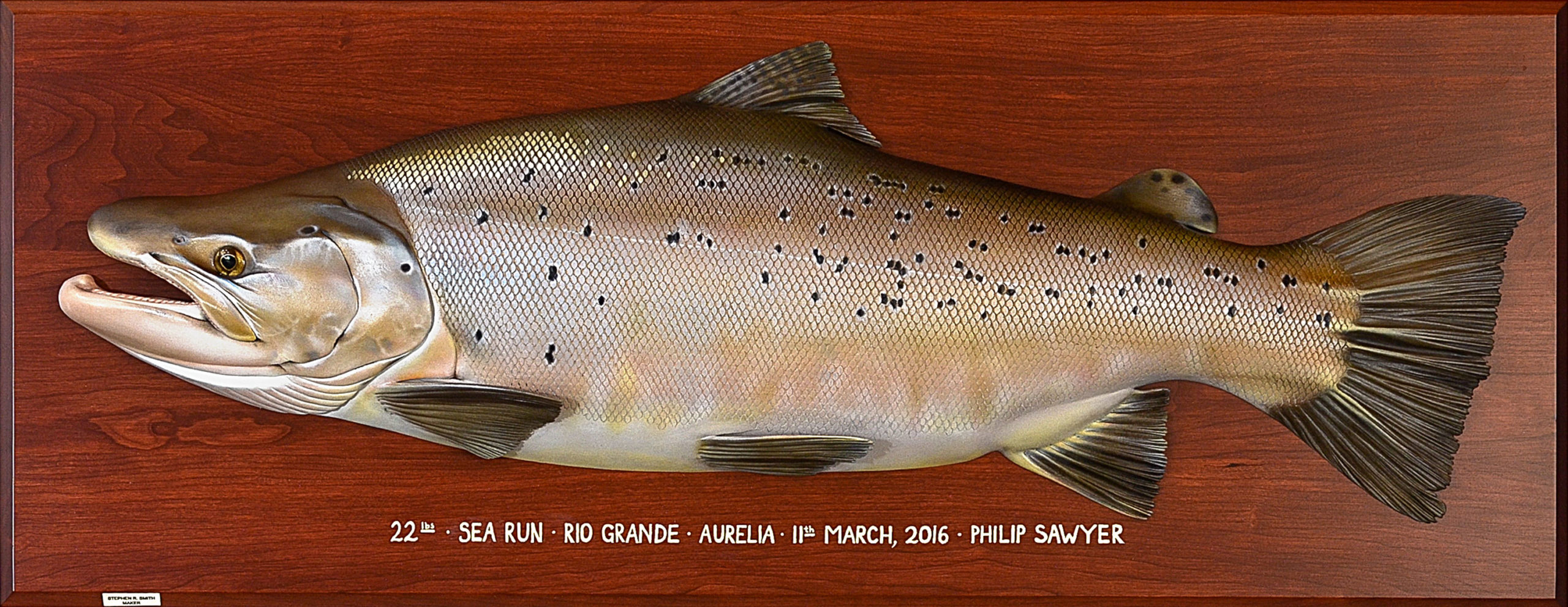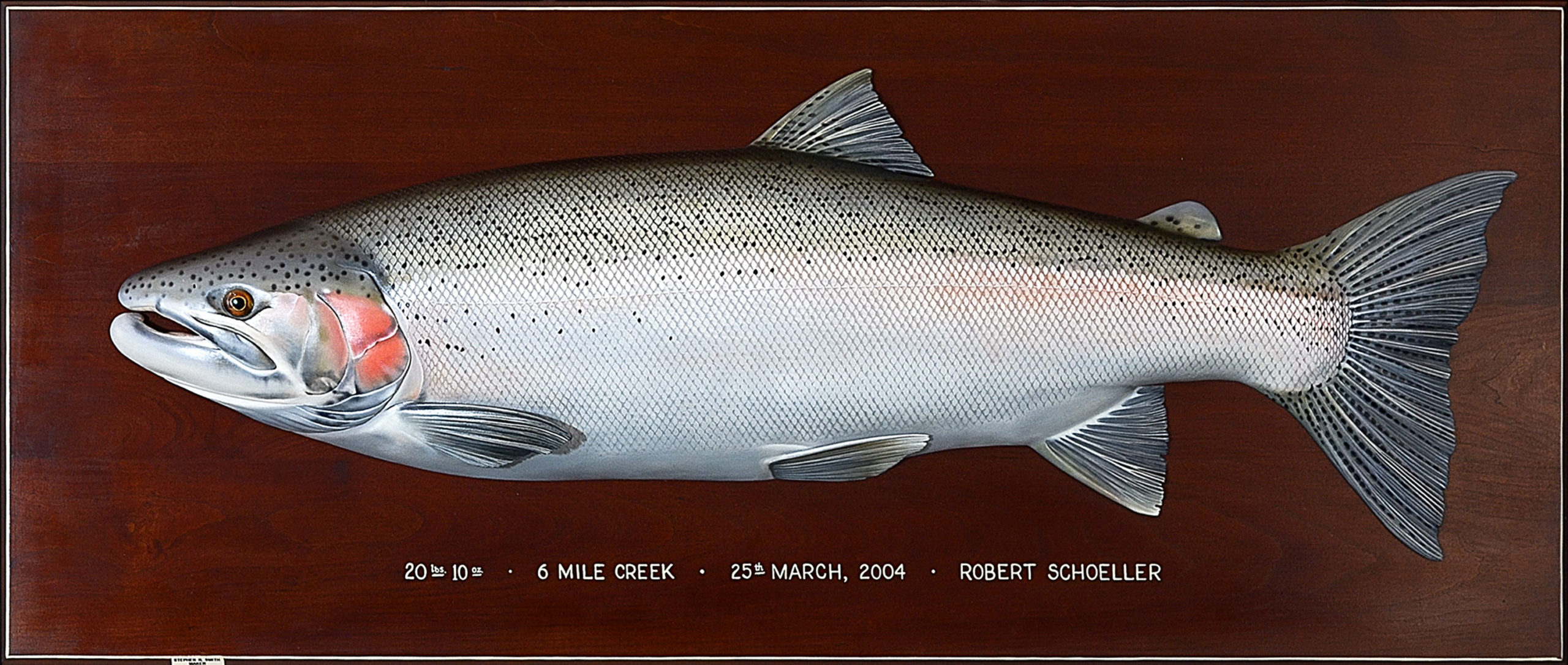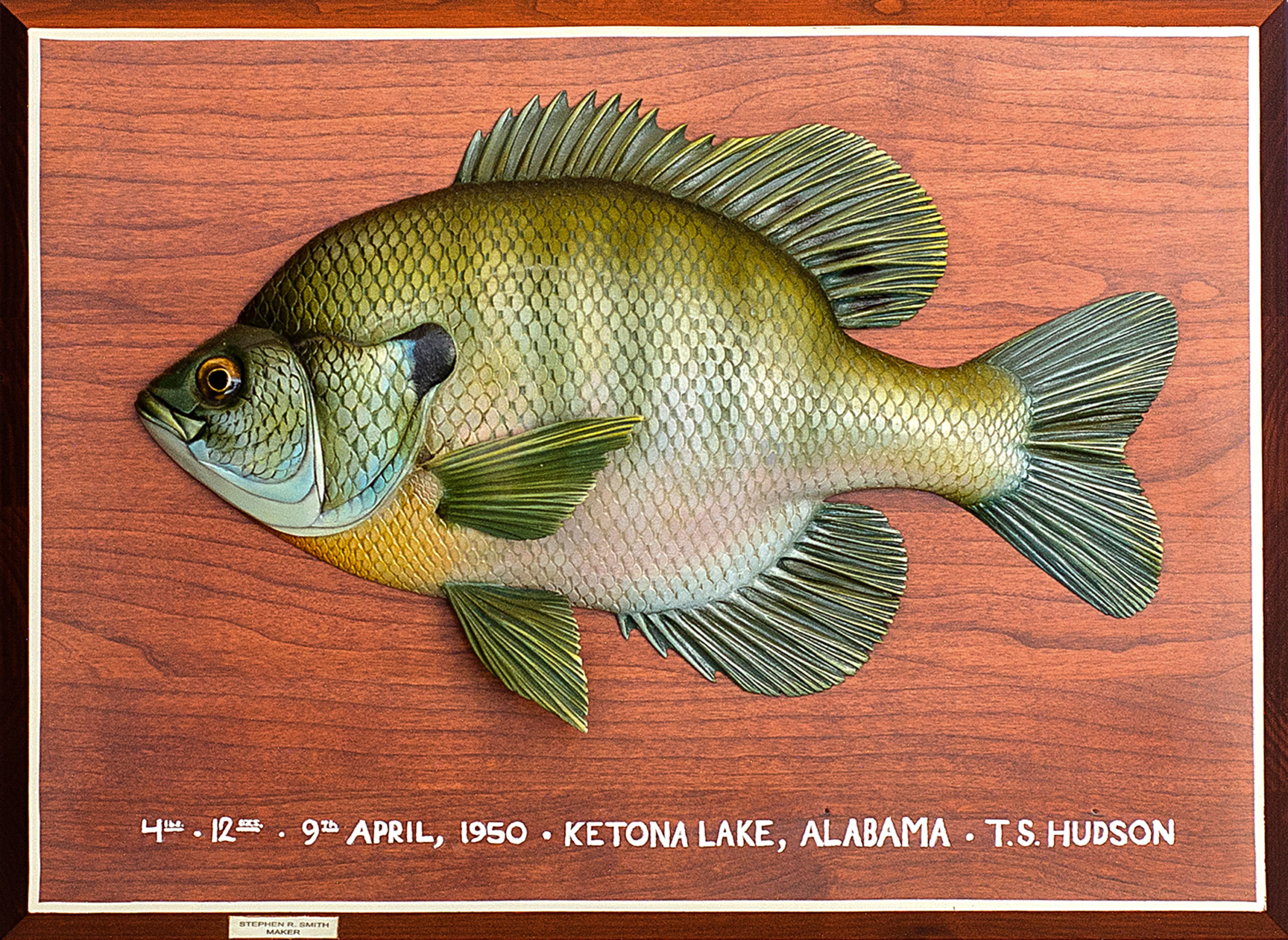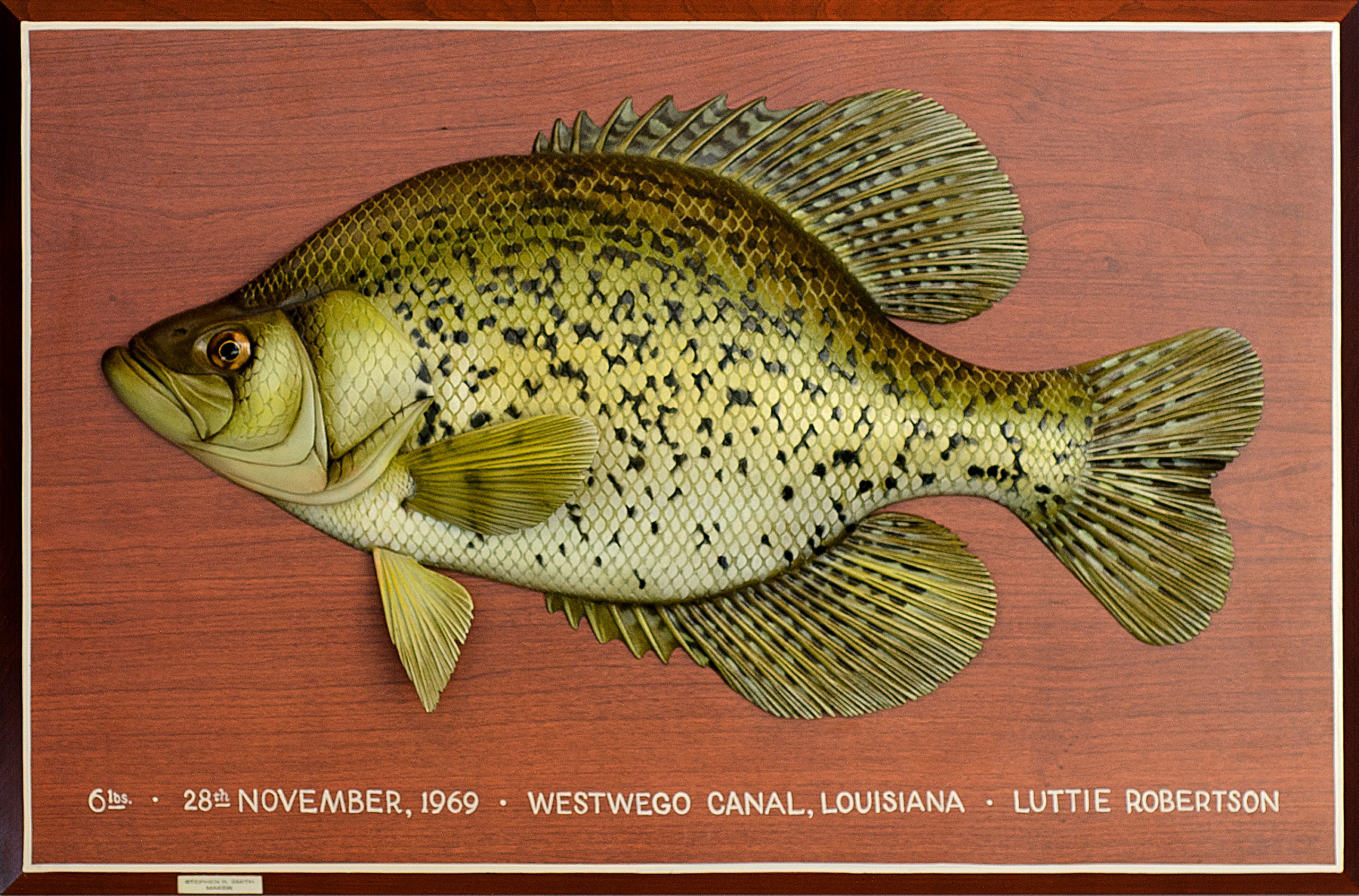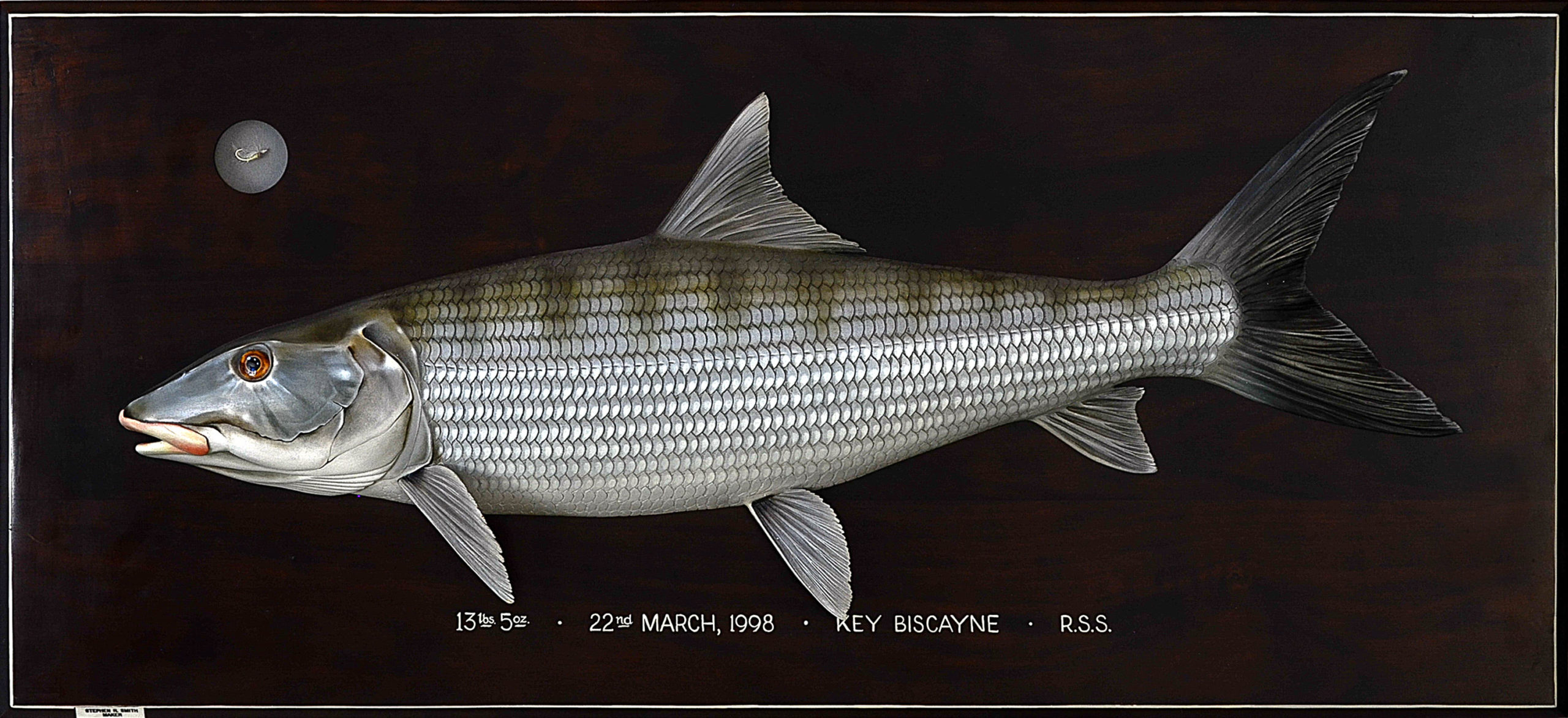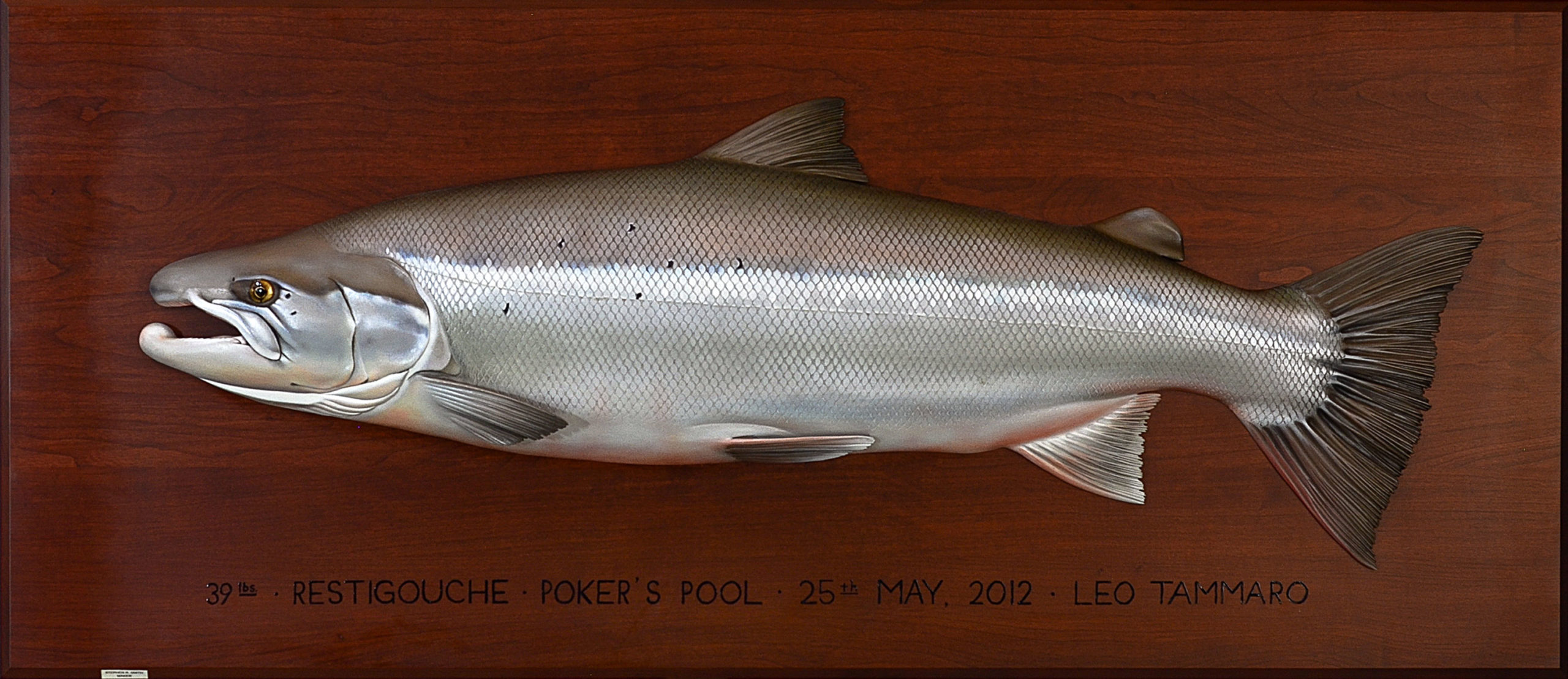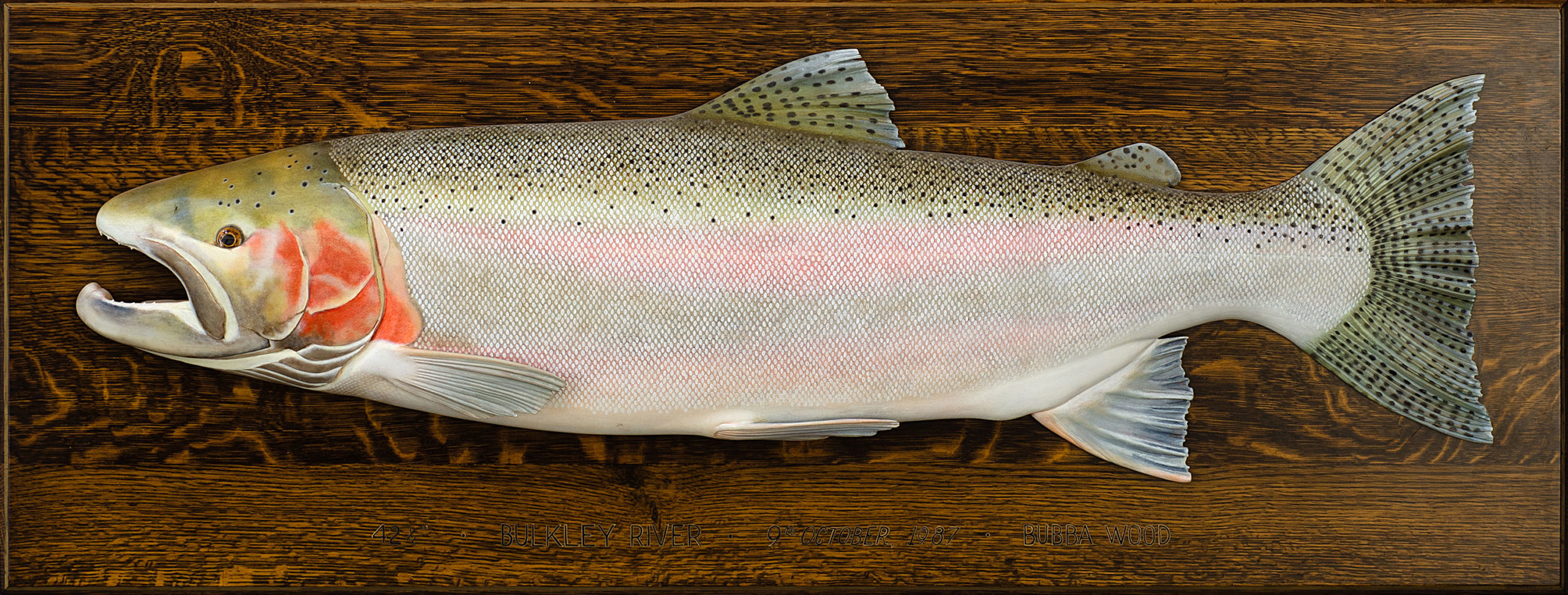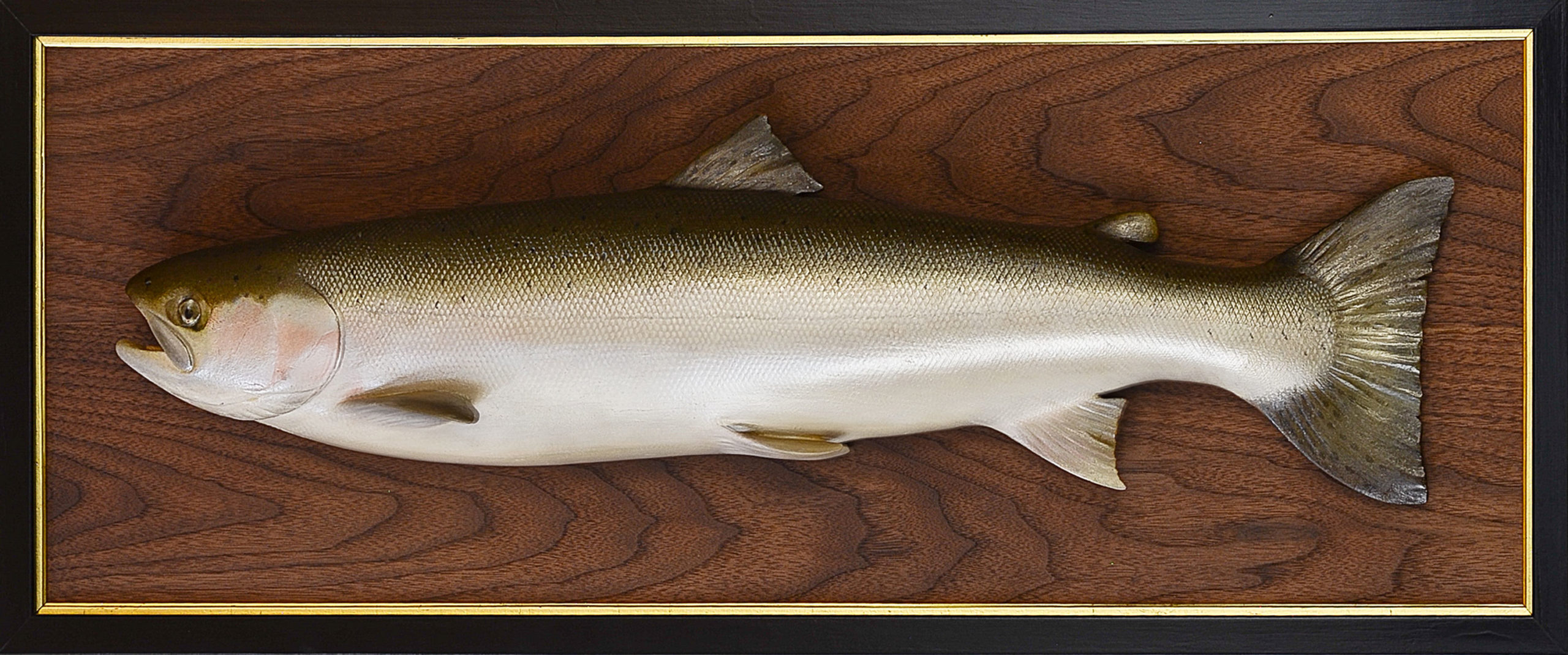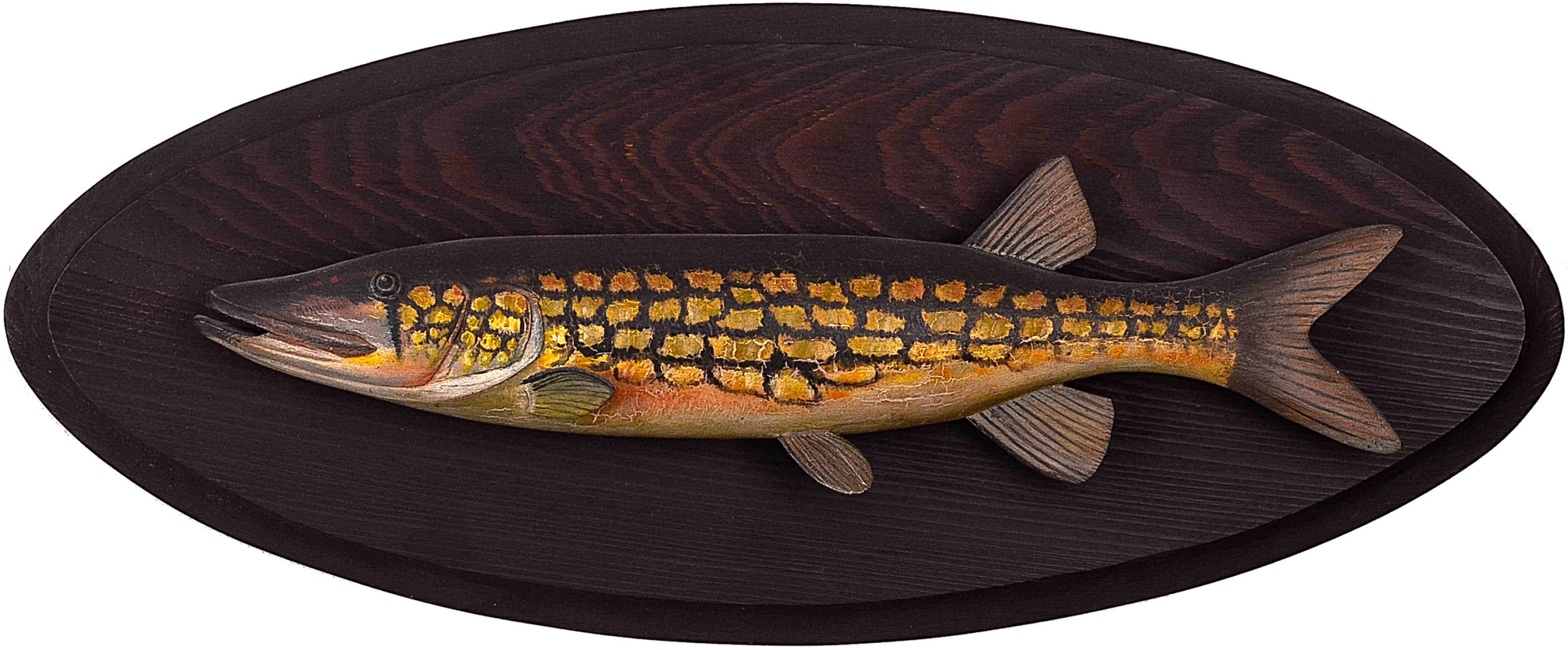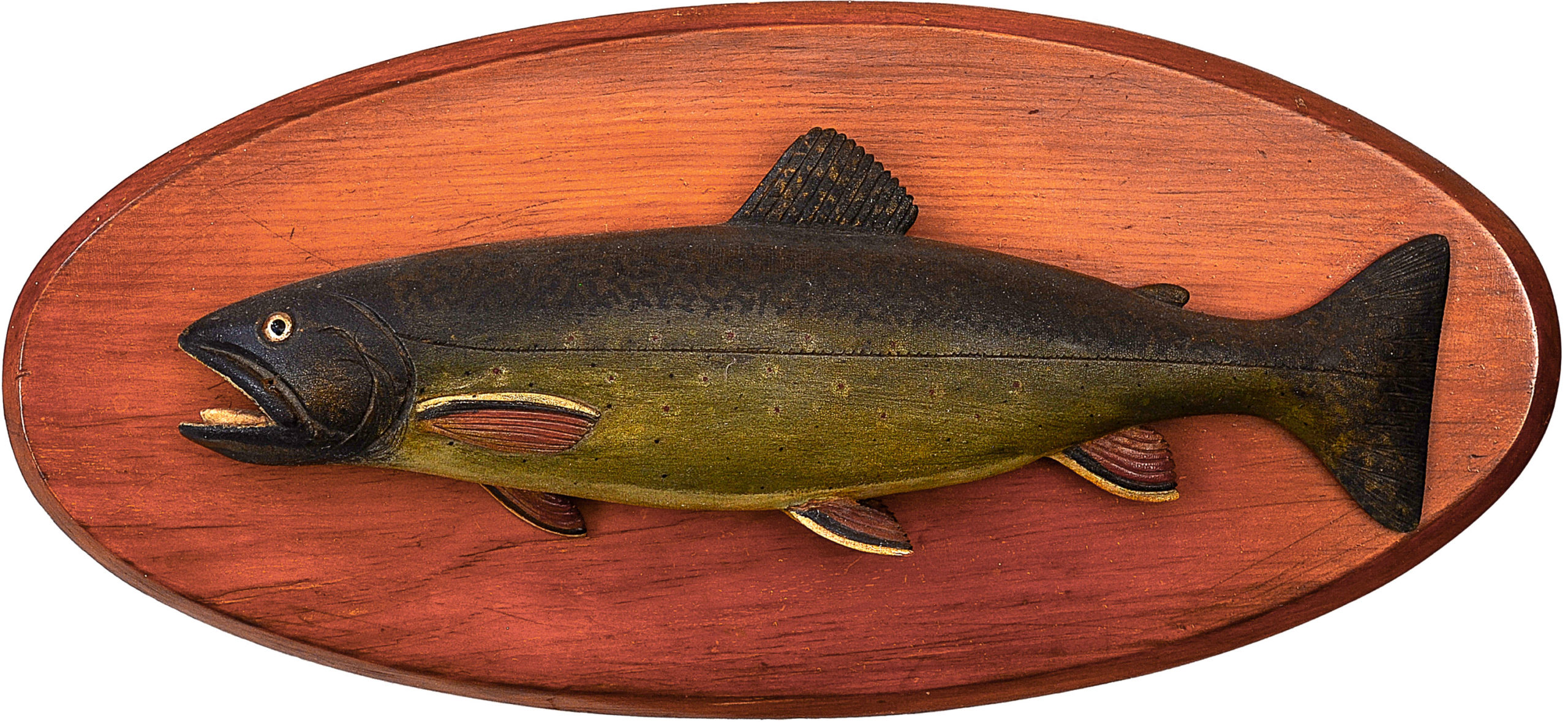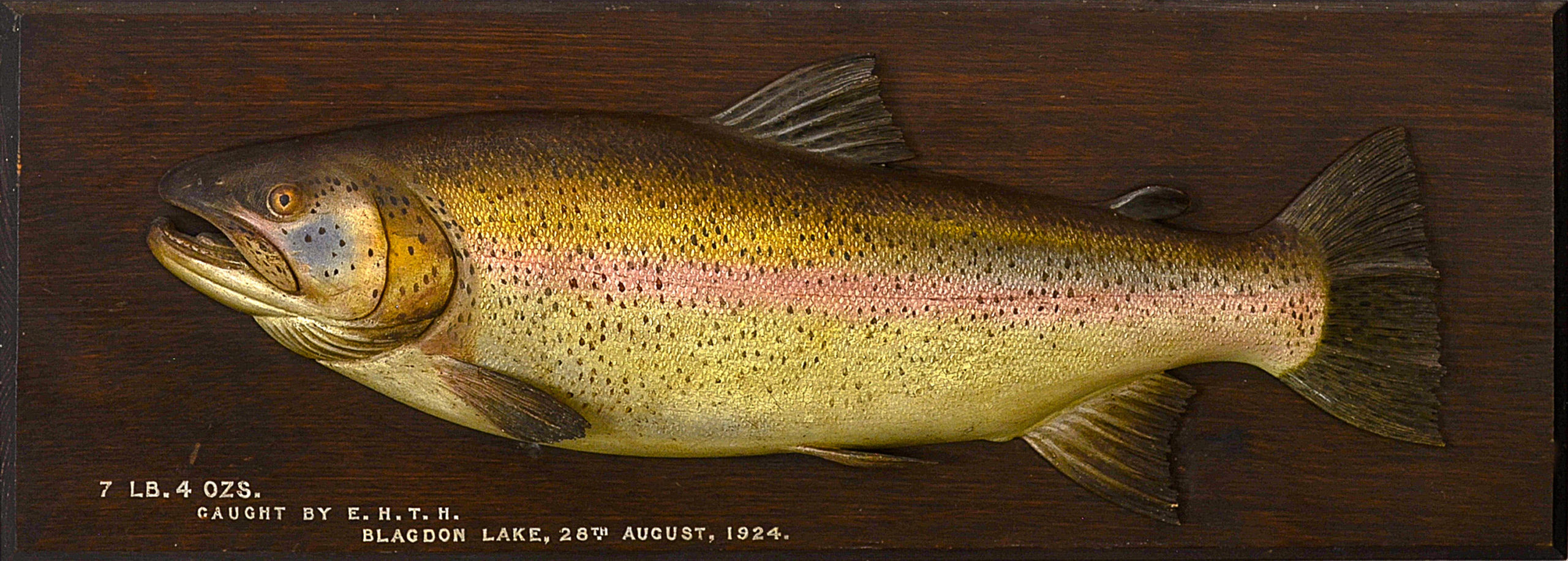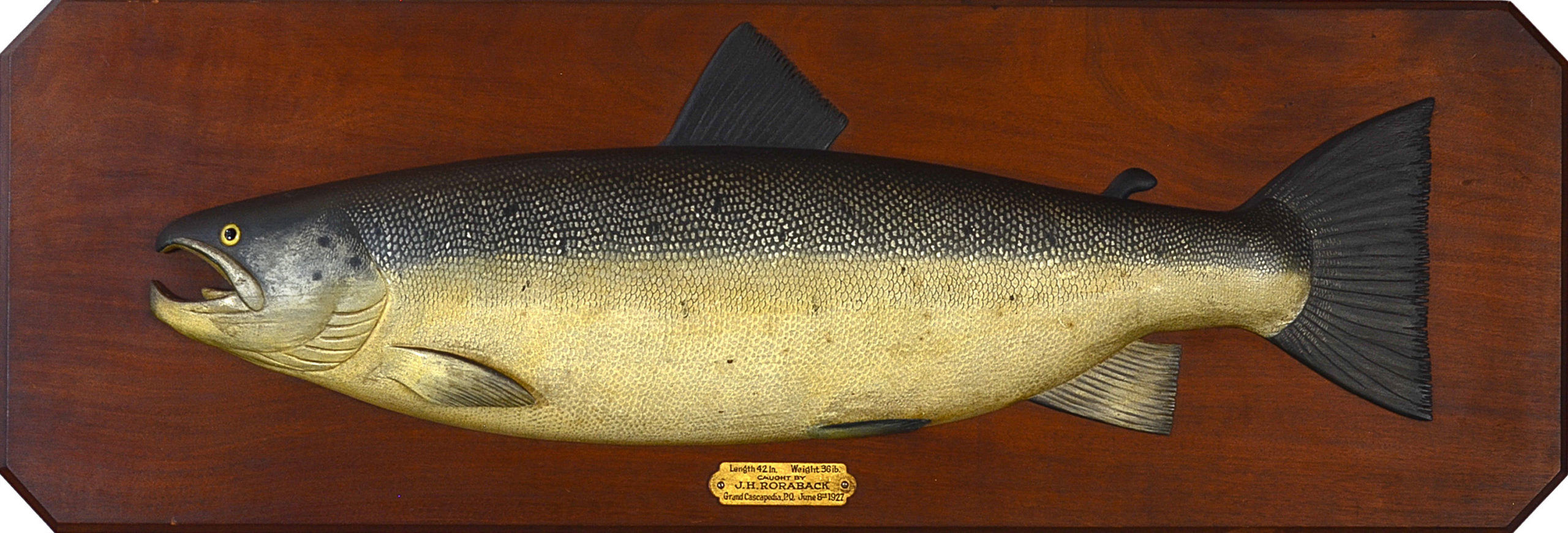Commemorating the Catch: Fish Carvings by Stephen R. Smith
Introduction by David Nichols
When I first heard about the idea to create an exhibit featuring the work of the finest fish-model carver today, I was excited.
As a collector of fish models for the past forty years, I was both pleased to see this art form receive recognition and to see the work of Steve Smith, its foremost practitioner, displayed in one place. As a trustee of the American Museum of Fly Fishing for more than twenty-five years, I felt privileged to be a part of recreating the historical context of early carvers with an eye to highlighting a contemporary one.
Fish models and the remembrances that they preserve are as old as angling itself. Stone and marble examples date to an epoch B.C.E. Before the advent of photography, an angler would save the fish and take it to a taxidermist. This was fine for some species, but the distance and sheer size of fish such as Atlantic salmon proved problematic for mounting, a process that did not last well anyway unless encased in fragile, expensive glass. This cumbersome approach, coupled with rivers discovered by English anglers in areas as remote as Scotland and Norway, called for a new solution. Before photography was practical, an angler might seek out a simple tracing to commemorate a catch. The more affluent might commission a wooden reproduction: carved, painted, and placed on a board, typically with the name of the angler, river, weight, date, and sometimes the fly used in the catch.
Some fish carvings approach the definition of folk art, but most fish models serve more as replicas, many artistically rendered with layered paint, carved detail, and anatomical realism. One can see the influence of his predecessors—particularly John Russell, John Tully, and Dhuie Russell Tully—in Steve’s work, which itself ranks alongside the best carvings of the nineteenth and early-twentieth centuries. Duck decoy makers Shang Wheeler and Elmer Crowell were later, less distinct influences. Awareness of these influences allows us to see how Steve Smith’s work has, perhaps, surpassed them.
I am honored to have known Steve for more than thirty years. I have witnessed carvings in his workshop and admired the striking works created by the man I consider today’s finest fish carver. The museum is proud to present Commemorating the Catch: Fish Carvings by Stephen R. Smith.
Historic Carvings
Take a look at the works of the masters who inspired Steven Smith, courtesy of the collection of David Nichols.


